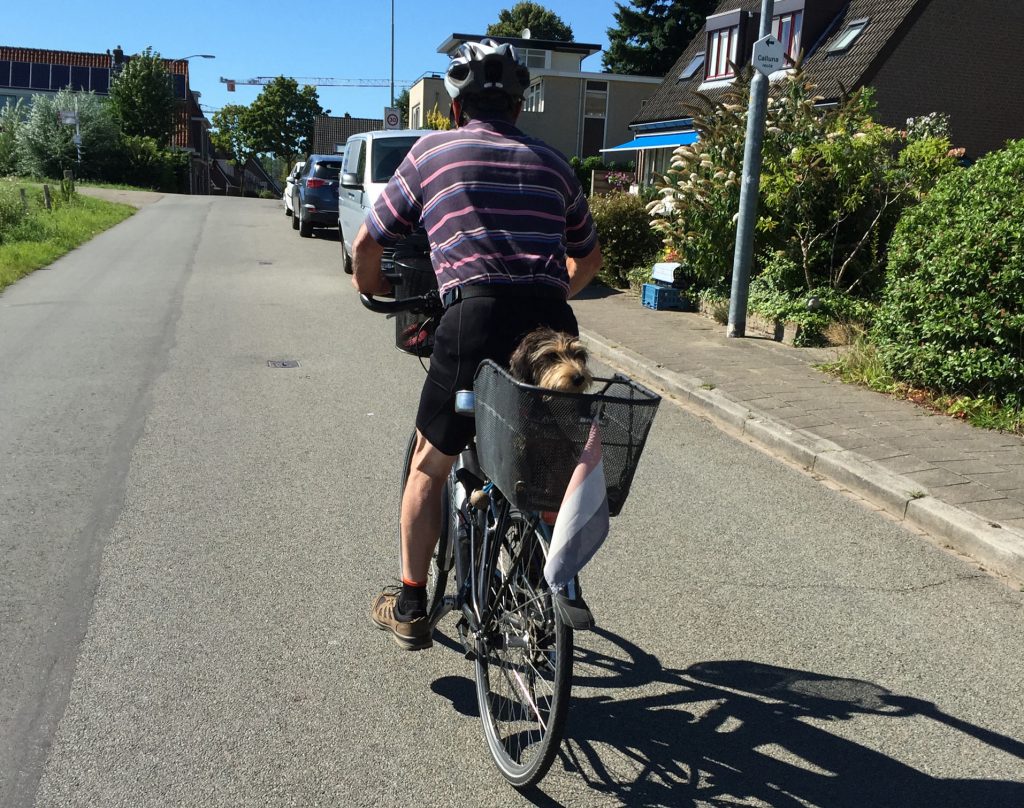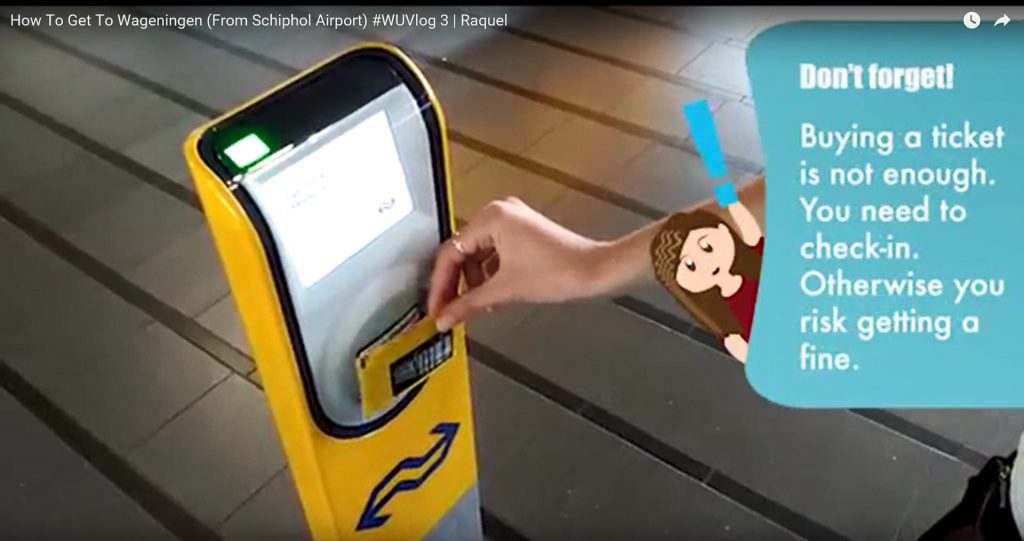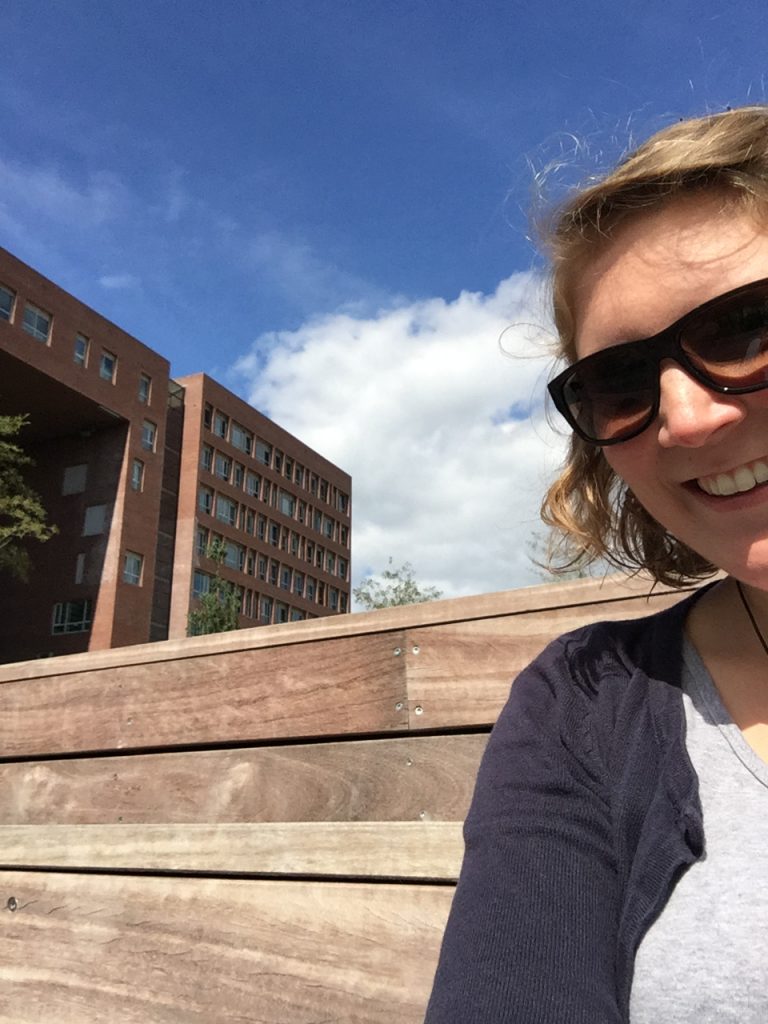Getting around in the Netherlands
You’re a freshmen in Wageningen and new to the Netherlands? You want to see a lot of this small country, but you don’t know how to get around? Then this is your travel guide.
“Fietsen” – you won’t come around cycling, whether you like it or not
You need to face it: The bike, or fiets in Dutch, is the most common vehicle in the Netherlands. So, the cliché is really true. As you probably recognised already, the bike lanes, or fietspad in Dutch, are fully developed. There are rarely places where you do not find a bike lane. That also means you should use it. Car drivers might get a little grumpy when they have to slow down because you’re driving on the street although there is a bike lane just next to the street. The same might be true for pedestrians when you’re using the sidewalk.
On roundabouts you have to take care whether you have to give way to cars or whether you have right of way. Most of the times you have the right of way in a roundabout, but that’s not always the case. So, please look at the signs and act accordingly. Of course, the same holds for junctions. Take care of the signs and try to make eye contact with other cyclists or car drivers that might come in your way. Often this minimum of communication makes your life and the one of other road users much easier.
When you arrived safely on your final destination please make sure that you put your bike in the bicycle racks. There are signs everywhere, especially on campus, that if you don’t put your bike in the designated spot, it might be taken away. Further, you should definitely lock your bike. Best thing to do is even to attach the lock to the bicycle rack or street light.
Assuming you’re giving a big house party in your apartment, but you don’t have a car for the transportation of the beer crates. You also do not want to walk or take the bus, since you need a lot of beer crates and you can’t carry all of them at once. Even in that case, the bike may be a perfect and cheap solution. Idealis for example lends so called bakfiets to its tenants. With the cargo bike you can easily transport the beer crates for your party.
Going to the beach
Of course, there are some destinations that you cannot reach by bike. Luckily, rail transportation is almost as well developed as bike lanes. From Wageningen you have to take the bus to Ede and from there you can travel to Utrecht and the rest of the Netherlands. If you’re planning to do a daytrip, for example to the beach, you should check whether there are so called ‘dagkaartjes’, day tickets, offered at Hema, Albert Hijn, Blokker, Kruidvat or any other store. Most of the times you pay between 15€ and 20€ for a dagkaart and then you may travel the whole day to any destination you like.
There are three things you have to take into account when you want to use a dagkaart. First, dagkaartjes are always special offers and you cannot buy them at any time. You have to check the stores when they offer the day tickets. Second, every offer is different with respect to the time the ticket is valid. Make sure that you check the timeslots you are allowed to travel with that specific dagkaart. Sometimes they are only valid during the weekends and often you’re not allowed to travel during commuting traffic (e.g. before 9 AM). Third, when you travel with a dagkaart, you have to check in and out when you are entering or leaving the train. That means, before you enter the train you have to put the dagkaart on one of the card readers on the train station and you have to do that again when you leave the train. You will find them easily, since they stand in your way and everyone around you is also checking in and out. In busses, the card readers are inside the bus.
If you plan to travel more often or if you have to commute to Wageningen, it may be an idea to get the OV Chipkaart. For Dutch students the OV Chipkaart is for free, but internationals may order one online. This Chipkaart can be recharged and you are paying with the Chipkaart in trains and busses instead of buying a ticket every time you travel.
But how do you know which train to take, to which platform you have to go and how often you have to change? There is a very handy website answering all these questions: 9292.nl – you enter your point of departure, your destination and the time you want to leave or arrive and the website tells you which trains you have to take when and where. By the way, there is also an app for your smartphone by 9292.nl. Since there is free Wi-Fi in every Dutch train, you can also check your connections while you’re on the move.
You’re sick of public transport?
Still, it may be that travelling by train is too expensive or you want to go to a place far away and therefore too complicated to get there by public transport. Then, you still have the option of carpooling. Via the website blablacar.com you can find people that have the same or similar point of departure and destination and you can share a ride. Often, this option is much cheaper than a regular train ticket.
Go out and explore!
I hope this brief overview is a good preparation for your next trip. There is so much to explore in the Netherlands. So, go out and explore. Get to know the country and its lovely people. Try to get off the beaten track and find out how the Netherlands really are. You will make lifetime memories!
Annika Kloos (23) shares her experiences of her student life in Wageningen in German. Read her blog for ‘Studieren Weltweit’ (German Academic Exchange Service, DAAD)



